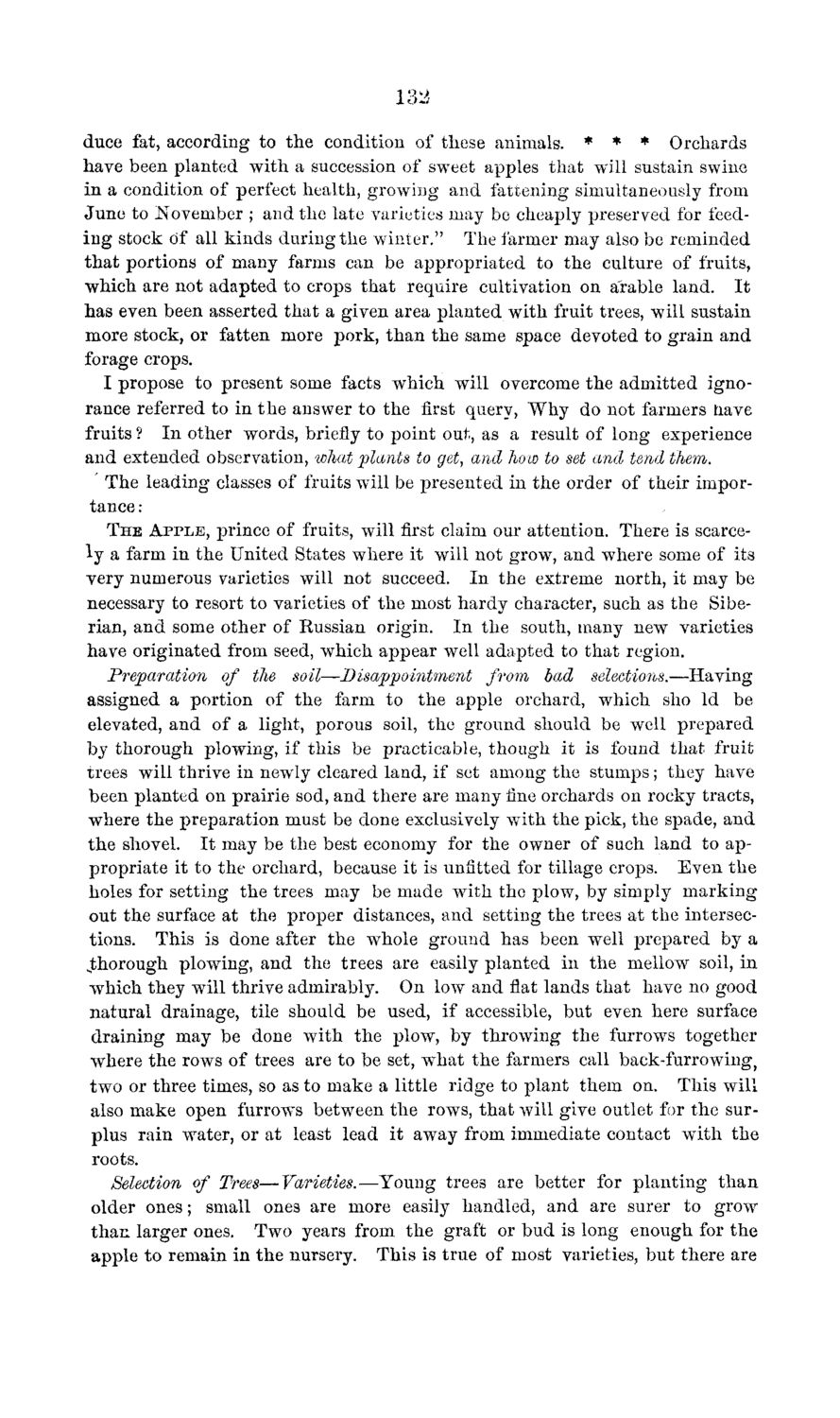| |
| |
Caption: Board of Trustees Minutes - 1869
This is a reduced-resolution page image for fast online browsing.

EXTRACTED TEXT FROM PAGE:
132 duce fat, according to the condition of these animals. * * * Orchards have been planted with a succession of sweet apples that will sustain swine in a condition of perfect health, growing and fattening simultaneously from June to November ; and the late varieties may be cheaply preserved for feedi n g stock of all kinds during the winter." The farmer may also be reminded that portions of many farms can be appropriated to the culture of fruits, which are not adapted to crops that require cultivation on arable land. I t has even been asserted that a given area planted with fruit trees, will sustain more stock, or fatten more pork, t h a n the same space devoted to grain and forage crops. I propose to present some facts which will overcome the admitted ignorance referred to in t h e answer to the first query, W h y do not farmers have fruits ? In other words, briefly to point out, as a result of long experience and extended observation, what plants to get, and how to set and tend them. The leading classes of fruits will be presented in the order of their importance : T H E A P P L E , prince of fruits, will first claim our attention. There is scarcel y a farm in the United States where it will not grow, and where some of its very numerous varieties will not succeed. In the extreme north, it may be necessary to resort to varieties of the most hardy character, such as the Siberian, and some other of Russian origin. In the south, many new varieties have originated from seed, which appear well adapted to that region. Preparation of the soil—Disappointment from bad selections.—Having assigned a portion of the farm to the apple orchard, which sho Id be elevated, and of a light, porous soil, the ground should be well prepared by thorough plowing, if this be practicable, though it is found that fruit trees will thrive in newly cleared land, if set among the stumps; they have been planted on prairie sod, and there are many fine orchards on rocky tracts, where the preparation must be done exclusively with the pick, the spade, and t h e shovel. It may be the best economy for the owner of such land to appropriate it to the orchard, because it is unfitted for tillage crops. Even t h e holes for setting the trees may be made with the plow, by simply m a r k i n g out the surface at the proper distances, and setting the trees at the intersections. This is done after the whole ground has been well prepared by a .thorough plowing, and the trees are easily planted in the mellow soil, in which they will thrive admirably. On low and flat lands that have no good natural drainage, tile should be used, if accessible, but even here surface draining may be done with the plow, by throwing the furrows together where the rows of trees are to be set, what the farmers call back-furrowing, two or three times, so as to make a little ridge to plant them on. This will also make open furrows between the rows, that will give outlet for the surplus rain water, or at least lead it away from immediate contact w i t h the roots. Selection of Trees—Varieties.—Young trees are better for planting t h a n older ones; small ones are more easily handled, and are surer to grow t h a n larger ones. Two years from the graft or bud is long enough for the apple to remain in the nursery. This is true of most varieties, but there are
| |